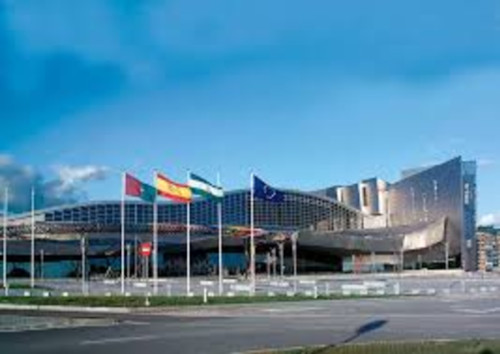SPECIAL SESSIONS
Besides Regular Sessions the Conference Program will include some Special Sessions on specific topics selected by the organizers or recommended by the Working Groups of the European Aerosol Assembly.
Authors interested in having their abstract(s) considered for inclusion in any of these Special Sessions should mark it during the submission process. Anyway, depending on the number of abstracts received for these Sessions some works could be moved to a Regular Session. Therefore, at least a conference topic should also be marked during submission.
List of Special Sessions:
Generation, analysis, detection and collection of aerosolized virus particles
Chairs: Victor U. Weiss, Arantza Eiguren-Fernandez and Juan Fernandez de la Mora
The recent coronavirus pandemic has
stimulated numerous studies on the transport, collection and
detection of airborne viruses. In particular, the development of new collection and detection technologies provides new tools for the characterization of transmission routes of airborne viruses. Alternatively, the aerosolization of intact viruses originally in liquid suspensions via elecrospray (ESI) and charge reduction has produced a substantial literature based on mobility separation and detection with condensation particle counters. It even appears that mobility analysis of viruses may reach beyond 200 nm, with resolving powers fitting the extremely narrow size distributions characteristic of many viral particles. Also recently, charge detection mass spectrometry (CDMS) of naturally charged electrosprayed particles has become a practical tool enabling precise mass (and charge) determination of individual whole virus and virus-like particles.
This special session will follow a keynote presentation by Martin Jarrold on CDMS and its exciting range of applications in basic research and pharmaceutical applications. The session aims to cover recent developments in these various emerging areas. We also hope to stimulate either the development of alternative high resolution aerosol analysis and detection methods (i.e., optical sizing and detection) for virus studies, or the application of existing virus analysis methods into broader areas of aerosol research.
_________________________________________
Effects of Dust on Health and Radiative Forcing
Chairs: Juan Andrés Casquero-Vera and Daniela Cesari
Mineral dust particles contribute to a major fraction of the global aerosol load, with an emission rate into the atmosphere currently estimated at 1000–3000 Tg/yr from the Earth's surface. Mineral dust could be significantly transported towards long-range distances, affecting, among others, 1) human health causing respiratory and cardiovascular disorders, 2) climate system through the absorption and scattering of shortwave and longwave radiation, 3) the distribution and lifetime of clouds and precipitation because it can act as a cloud- or ice-nucleating particle, 4) atmospheric chemistry through its interaction with trace gases. Further, another aspect to consider is the potential implication on human health induced by biological material present in dust particles.
This session provides a space for international experts to share their research on the role of mineral dust on health and climate (by direct and indirect effect). This session aims to gather submissions of novel and original works on the aforementioned mineral dust effects and intends to bring together the scientific communities of air quality modelling and atmospheric observations (in-situ and remote sensing)._________________________________________
Non-Exhaust Traffic Emissions
Chairs: Adam Boies and Christof Asbach
With the constant reduction of particulate tailpipe emissions, non-exhaust emissions from traffic have come increasingly into focus. For road transport, non-exhaust emissions are primarily comprised of brake, tire and road wear, which –in contrast to tailpipe emissions- have increased over the years, mainly due to the increased average vehicle weight. The upcoming Euro 7 regulation will for the first time introduce limit values for the brake and tire wear emission factors. Despite dedicated set ups and protocols for laboratory measurements, the reproducible and representative determination of the emissions remains challenging. In addition, the information on their effects on air quality and possible health effects is still rather sparse so far. Methods for identifying these emissions and conducting source apportionment for non-exhaust emissions remain in development.
This special session welcomes contributions on all aspects related to
particulate non-exhaust traffic emissions, including their measurement, modelling,
dispersion, health effect or mitigation strategies.
_________________________________________
Oxidative Potential of Aerosol Particles
Chairs: Pourya Shahpoury, Athanasios Nenes and Daniele Contini
It is well established that global population exposure to outdoor and indoor air pollution leads to millions of premature deaths from respiratory, cardiovascular and other diseases every year. Epidemiological evidence associates the health effects of air pollution to the inhalation of particulate matter, which acts as carrier for a mixture of toxic substances, including metals and organic species. Mounting evidence suggests that the adverse health effects are related to the induction of oxidative stress following the formation of reactive oxygen species (ROS) in the lung and throughout the body. Oxidative potential (OP) has been proposed as a metric for characterizing the potential of pollutants to cause oxidative stress and health outcomes. OP can be quantified using a variety of acellular and cellular assays as well as model simulation. Establishing the relationships between aerosol sources and chemical composition, exposure pathways, biochemical mechanisms, and health outcomes is key for risk assessment of air pollutants and effective air quality management.
This
session provides a platform for international experts from academia, government,
and industry to share their research on the role of
OP in the adverse health effects of air pollutants. Submission topics could
include: OP of indoor and outdoor aerosols, application of acellular and cellular
OP assays, OP and its relation to aerosol chemical and physical characteristics
and emission sources, and biological and epidemiological aspects of OP.
_________________________________________
Data Science in Aerosol Research
Chairs: David Broday and Nanna Myllys
Primary particulate pollutants are emitted from different sources, whose spatial distribution and temporal patterns are non-uniform, resulting in a wide range of spatiotemporally varying intensities. Secondary particle formation is responsible for half of the aerosol particles in the atmosphere. As an enormous number of different compounds and mechanisms are involved, predicting aerosol particle formation is challenging. Meteorological processes that span multiple spatiotemporal scales affect nonlinearly physicochemical processes that govern the fate of airborne pollutants (dispersion-reaction-removal). In the recent years, new modeling approaches, collectively termed machine learning, emerged and were often shown to achieve better performance than classical (conservation equations-based) models.
The goal of this special session is to present the state-of-the-aerosol-research
in using machine learning and related methods for enhancing our understanding
of molecular-level particle formation mechanisms, particle fate processes, and
for extracting hidden information from observational data. Authors involved in these studies are invited to
submit an abstract to this special session.
_________________________________________
Airborne Nano- and Microplastics
Chairs: Angeliki Karanasiou, Sari Budisulistiorini and Jonas Elm
Nano- and microplastics are ubiquitous in marine and terrestrial environments and have also been detected in the air over the last decade. Their nano and micrometer sizes allow longer atmospheric residence times to play an important role in atmospheric chemistry. Atmospheric transport is vital in spreading nano- and microplastics from polar regions and marine areas to the highest mountain tops. They can impact the climate by scattering and, to a lesser extent, absorbing sunlight and simultaneously affecting oxidation processes in the atmosphere. Furthermore, atmospheric photochemical and oxidative ageing processes can transform their physical and chemical characteristics, which, when deposited, alter the biology and chemistry of the earth and oceans. Also, airborne nano- and microplastics can potentially induce health risks when inhaled. Overall, little is known about the atmospheric fate of atmospheric nano- and microplastics.
This special session welcomes all abstracts related to atmospheric nano- and microplastics. Studies targeting the physical and chemical properties, transport, and impacts of nano- and microplastics are of interest. The special session is open to experimental, observation, and modelling studies, and we encourage submission from all aspects of aerosol science.





